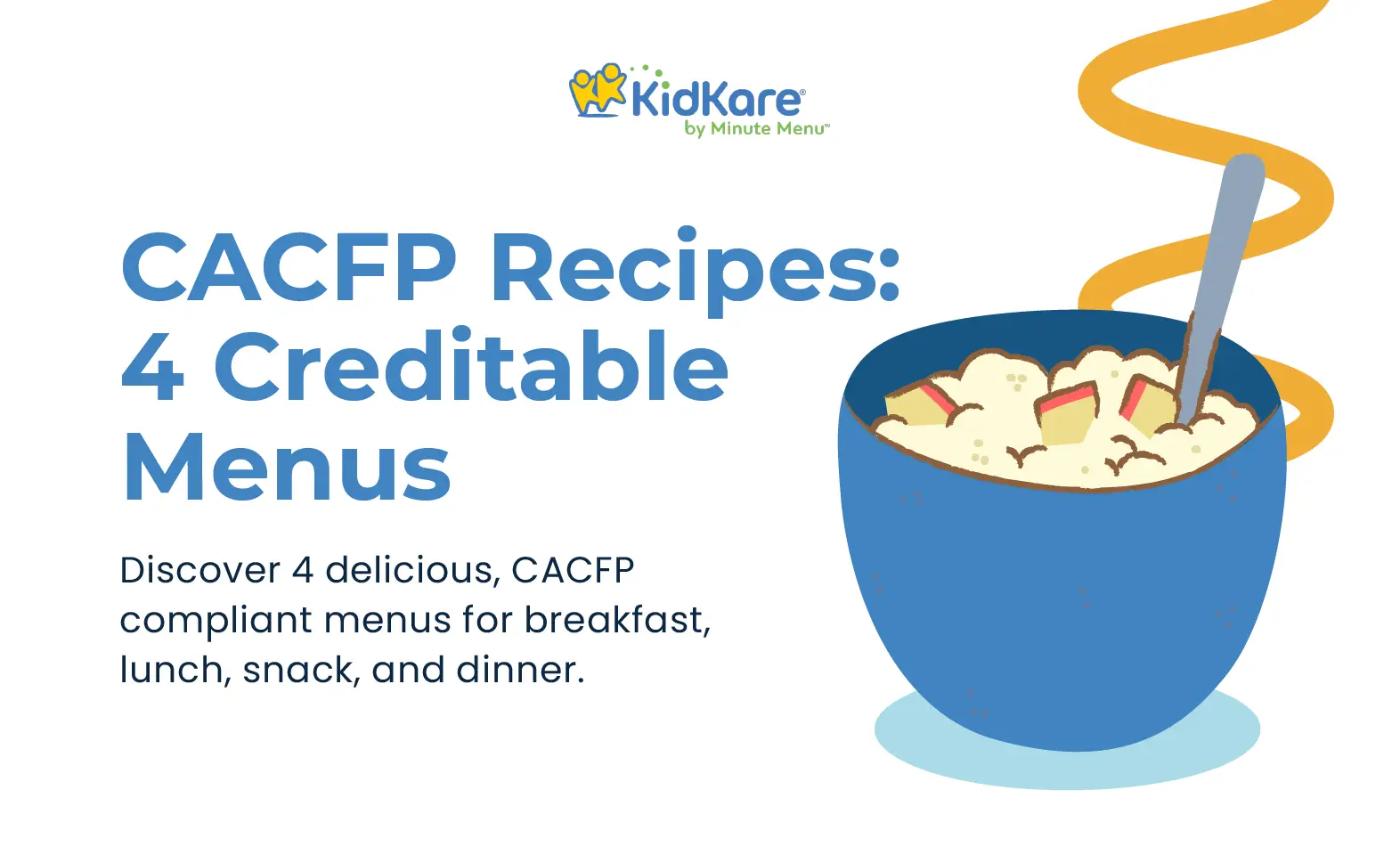
The Child and Adult Care Food Program (CACFP) plays a crucial role in providing nutritious meals to children and adults in care settings. CACFP recipes are essential to ensure that participants receive balanced and delicious meals that meet program requirements. Developing menus that are both appealing and compliant can be challenging, but with the right approach, it’s possible to create meals that nourish both body and soul.
This article presents four creditable CACFP menus to try today, covering breakfast, lunch, snacks, and dinner. Each recipe is designed to meet CACFP guidelines while offering tasty and nutritious options for participants. From a whole grain breakfast bowl to a colorful vegetable lunch, a fruit and yogurt parfait snack, and a balanced dinner with lean meat, these menus provide inspiration for care providers looking to enhance their meal offerings.

The Child and Adult Care Food Program (CACFP) has specific requirements for breakfast meals. At least one serving of grains per day must be whole grain-rich [1]. This requirement applies to meals served to children and adults, but not to infant meals [1]. The USDA’s CACFP Best Practices recommends serving at least two whole grain-rich grains per day [2].
Breakfast cereals must contain no more than 6 grams of total sugars per dry ounce through September 30, 2025 [3]. After this date, cereals must contain no more than 6 grams of added sugars per dry ounce [3]. It’s important to note that grain-based desserts may not be used to meet the grains requirement [3].
A nutritious whole grain breakfast bowl can be made using a combination of grains and other healthy ingredients. Here’s a suggested recipe:
To prepare this delicious and CACFP-compliant breakfast bowl:
This breakfast bowl not only meets CACFP requirements but also provides a delicious and nutritious start to the day, combining the chewiness of barley with the sweetness of fruit and maple syrup [4].
The Child and Adult Care Food Program (CACFP) has specific requirements for lunch meals. For children aged 3-5, the lunch meal pattern includes ¾ cup of unflavored low-fat (1%) or unflavored fat-free milk, 1 ½ ounces of meat/meat alternates, ¼ cup of vegetables, ¼ cup of fruits, and ½ ounce equivalent (oz eq) of grains [5]. The USDA’s CACFP Best Practices recommends serving only lean meats, nuts, and legumes, limiting processed meats to one serving per week, and serving only low-fat or reduced-fat natural cheese [5].
To create a nutritious and CACFP-compliant lunch, consider the following ingredients:
This colorful and nutritious lunch meets CACFP requirements while providing a variety of vegetables and lean protein [6]. It’s important to note that raw leafy greens such as lettuce or spinach credit as half the volume served. For example, ½ cup of raw leafy greens credits as ¼ cup of the vegetables component [5].

The Child and Adult Care Food Program (CACFP) requires that snacks include two of the five meal components. For children aged 3-5, a snack should include 1/2 cup of fruit and 4 fluid ounces of milk [7]. The CACFP nutrition standards support the service of a greater variety of vegetables and fruit, whole grains, lean meats/meat alternatives, and low-fat and fat-free dairy while minimizing added sugar and saturated fat [8].
To create a delicious and CACFP-compliant fruit and yogurt parfait snack, you’ll need:
This parfait provides 1 oz equivalent meat alternate and 1/2 cup fruit [10]. For added crunch, sprinkle 1/8 cup (about 0.5 oz) of granola over the yogurt [10]. Remember to hold the parfaits at 41 °F or below for food safety [10].

The Child and Adult Care Food Program (CACFP) has specific requirements for dinner meals. For children aged 3-5, the dinner meal pattern includes ¾ cup of unflavored low-fat (1%) or unflavored fat-free milk, 1 ½ ounces of meat/meat alternates, ¼ cup of vegetables, ¼ cup of fruits, and ½ ounce equivalent (oz eq) of grains [5]. The USDA’s CACFP Best Practices recommends serving only lean meats, nuts, and legumes, limiting processed meats to one serving per week, and serving only low-fat or reduced-fat natural cheese [5].
To create a nutritious and CACFP-compliant dinner, consider the following ingredients:
This balanced dinner meets CACFP requirements while providing a variety of nutrients. Remember, at least one serving of grains per day must be whole grain-rich [11]. Also, when two vegetables are served at dinner, two different kinds of vegetables must be served [11].
The CACFP recipes presented in this article offer a range of nutritious and delicious options to meet program requirements. These menus have an impact on the health and well-being of children and adults in care settings by providing balanced meals that are both appealing and compliant. From breakfast to dinner, each recipe is designed to nourish participants while adhering to CACFP guidelines.
By incorporating these menu ideas, care providers can enhance their meal offerings and ensure they’re meeting nutritional standards. These recipes not only help to fulfill program requirements but also introduce variety and flavor to daily meals. As providers continue to explore new ways to create tasty and healthful dishes, they contribute to the ongoing effort to improve nutrition in care settings.
[1] – https://www.fns.usda.gov/cacfp/grain-requirements-cacfp-questions-and-answers
[2] – https://portal.ct.gov/-/media/SDE/Nutrition/CACFP/MealPattern/Menu_CACFP_Breakfast_Cold.pdf
[3] – https://www.fns.usda.gov/cacfp/nutrition-standards/breakfast-meal-pattern
[4] – http://mykentuckyhome-kim.blogspot.com/2021/01/a-whole-grain-breakfast-bowl-to-start.html
[5] – https://portal.ct.gov/-/media/SDE/Nutrition/CACFP/MealPattern/Menu_CACFP_Lunch_Supper_Hot.pdf
[6] – https://www.collegenutritionist.com/blog/30-high-protein-meals-with-vegetables/
[7] – https://www.fns.usda.gov/cacfp/nutrition-standards/snack-meal-pattern
[8] – https://www.fns.usda.gov/cacfp/nutrition-standards
[9] – http://www.cacfpsvdp.org/uploads/5/4/1/5/54150169/yogurt_berry_parfait_pg_80.pdf
[10] – https://theicn.org/cnrb/recipes-for-schools-vegetables/seasonal-fruit-and-yogurt-parfaits-usda-recipe-for-schools/
[11] – https://www.fns.usda.gov/cacfp/nutrition-standards/lunch-supper-meal-pattern